Abstract
We examined the effects of receptive speech on the acquisition of manual signing among three mentally retarded children. In an alternating treatments design, we compared the acquisition of expressive signs that were, versus were not, in a child's receptive vocabulary. The children were trained via total communication in which pictorial referents were named during sign training. Signs corresponding to known words were generally acquired faster and retained better than signs corresponding to unknown words. We conducted posttests to assess the stimulus control of signing and any changes in expressive and receptive signing and speech. Observed changes in performance could be accounted for by attention to aspects of the stimulus complex during training and functional equivalence of stimuli established by training.
Full text
PDF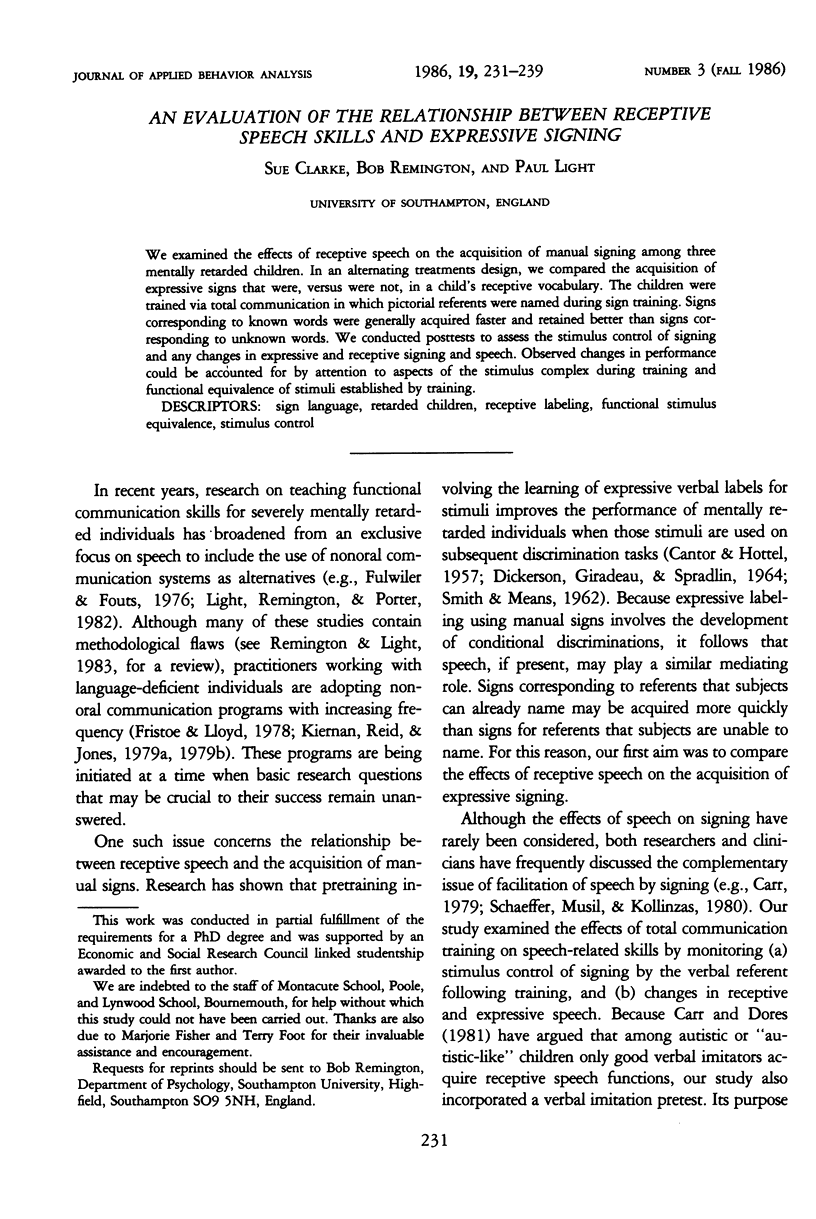
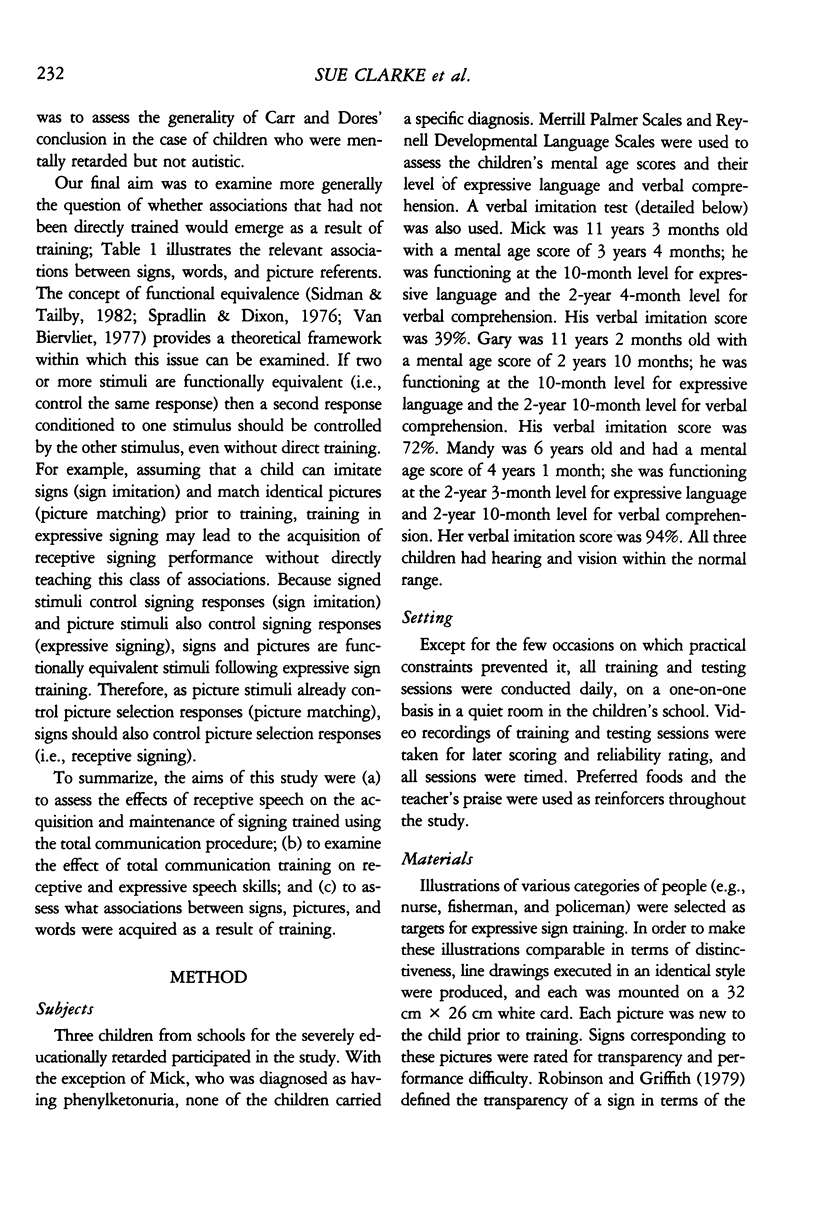



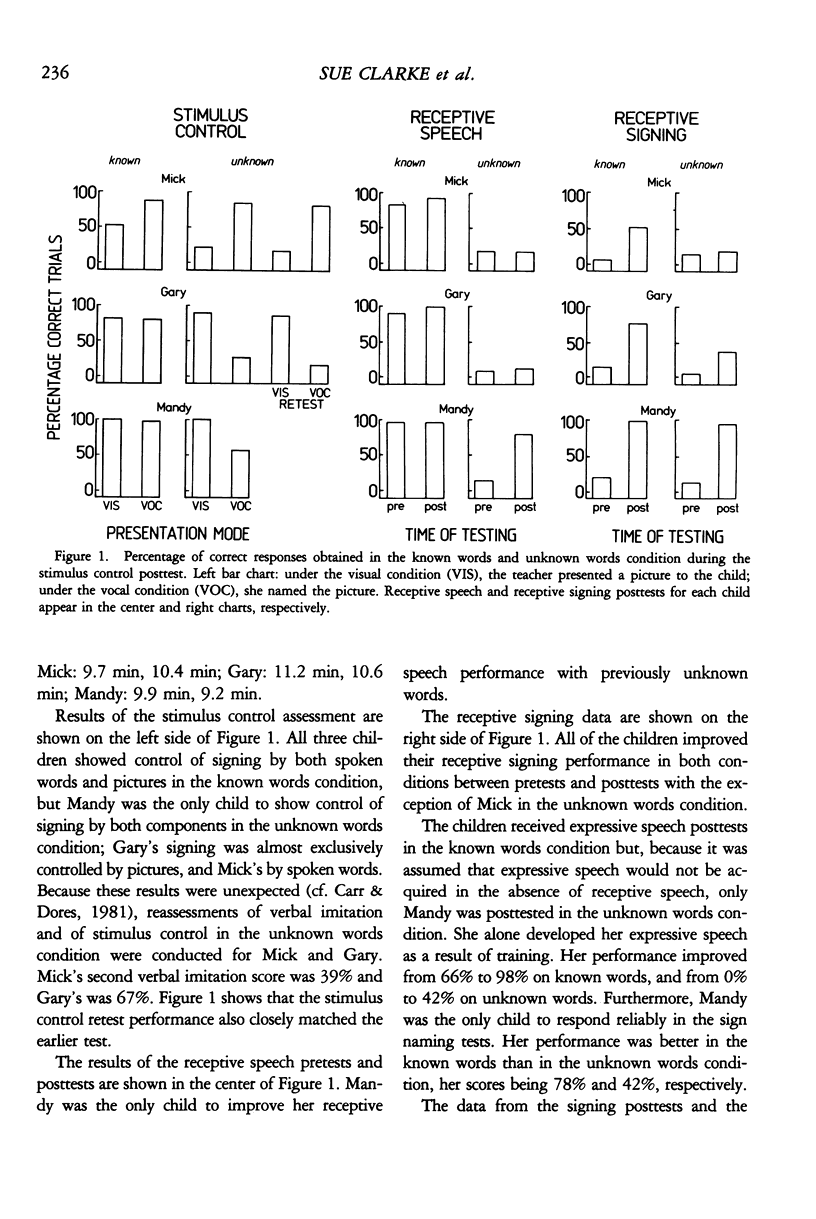

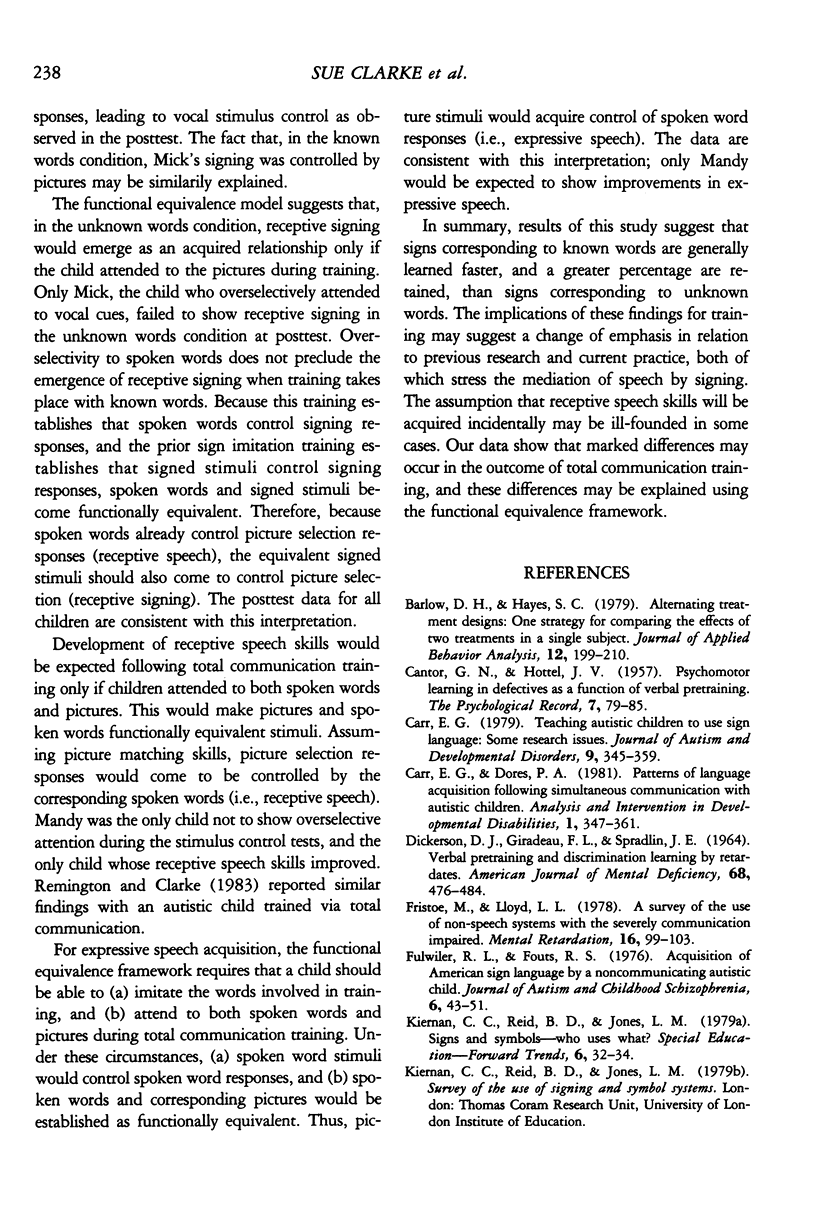
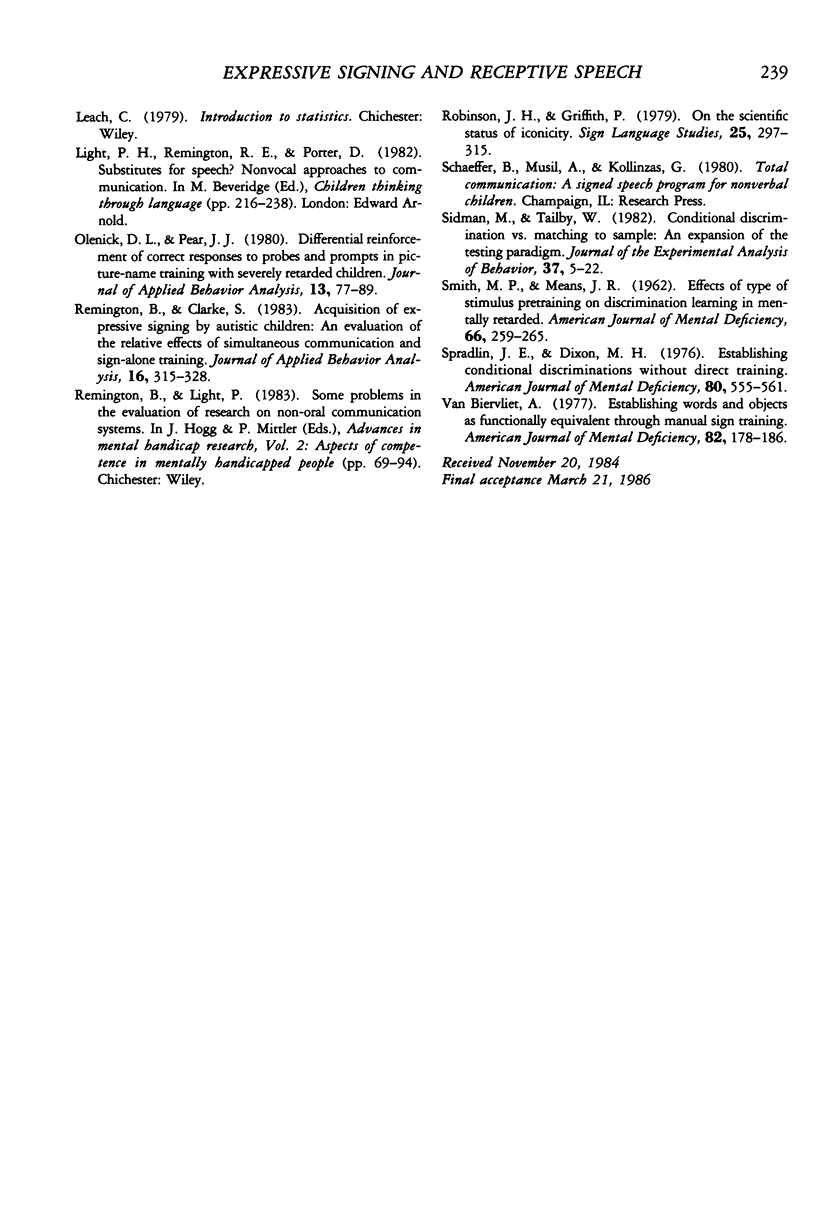
Selected References
These references are in PubMed. This may not be the complete list of references from this article.
- Barlow D. H., Hayes S. C. Alternating treatments design: one strategy for comparing the effects of two treatments in a single subject. J Appl Behav Anal. 1979 Summer;12(2):199–210. doi: 10.1901/jaba.1979.12-199. [DOI] [PMC free article] [PubMed] [Google Scholar]
- Carr E. G. Teaching autistic children to use sign language: some research issues. J Autism Dev Disord. 1979 Dec;9(4):345–359. doi: 10.1007/BF01531444. [DOI] [PubMed] [Google Scholar]
- DICKERSON D. J., GIRARDEAU F. L., SPRADLIN J. E. VERBAL PRETRAINING AND DISCRIMINATION LEARNING BY RETARDATES. Am J Ment Defic. 1964 Jan;68:476–484. [PubMed] [Google Scholar]
- Fristoe M., Lloyd L. L. A survey of the use of non-speech systems with the severely communication impaired. Ment Retard. 1978 Apr;16(2):99–103. [PubMed] [Google Scholar]
- Fulwiler R. L., Fouts R. S. Acquisition of American sign language by a noncommunicating autistic child. J Autism Child Schizophr. 1976 Mar;6(1):43–51. doi: 10.1007/BF01537941. [DOI] [PubMed] [Google Scholar]
- Kiernan C., Reid B., Jones L. Signs and symbols--Who uses what? Spec Educ Forward Trends. 1979 Dec;6(4):32–34. [PubMed] [Google Scholar]
- Olenick D. L., Pear J. J. Differential reinforcement of correct responses to probes and prompts in picture-name training with severely retarded children. J Appl Behav Anal. 1980 Spring;13(1):77–89. doi: 10.1901/jaba.1980.13-77. [DOI] [PMC free article] [PubMed] [Google Scholar]
- Remington B., Clarke S. Acquisition of expressive signing by autistic children: an evaluation of the relative effects of simultaneous communication and sign-alone training. J Appl Behav Anal. 1983 Fall;16(3):315–327. doi: 10.1901/jaba.1983.16-315. [DOI] [PMC free article] [PubMed] [Google Scholar]
- Sidman M., Tailby W. Conditional discrimination vs. matching to sample: an expansion of the testing paradigm. J Exp Anal Behav. 1982 Jan;37(1):5–22. doi: 10.1901/jeab.1982.37-5. [DOI] [PMC free article] [PubMed] [Google Scholar]
- Spradlin J. E., Dixon M. H. Establishing conditional discriminations without direct training: stimulus classes and labels. Am J Ment Defic. 1976 Mar;80(5):555–561. [PubMed] [Google Scholar]
- VanBiervliet A. Establishing words and objects as functionally equivalent through manual sign training. Am J Ment Defic. 1977 Sep;82(2):178–186. [PubMed] [Google Scholar]


